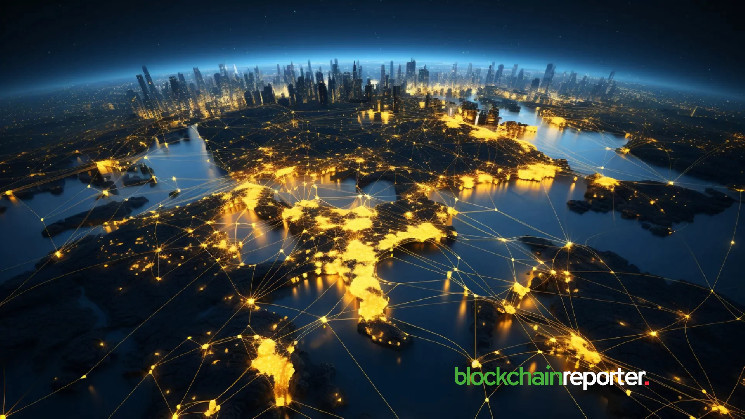Real World Assets (RWA) in DeFi and Crypto demonstrate how tokenization unites blockchain and traditional finance. Digital tokens for real estate and gold could change decentralized finance. To add RWAs to DeFi, you must understand how they formalize off-chain transactions, connect information, and handle demand and supply in the RWA protocol. RWAs connect the real and digital worlds in DeFi, expanding investment opportunities, liquidity, and market access. This DeFi RWA study shows how innovation and financial change are possible in a fast-changing ecosystem.
Understanding How RWAs Work
Understanding how RWAs work is essential to understanding their value in DeFi. Off-chain formalization, information bridging, and RWA protocol demand and supply comprise RWAs’ structured process.
Off-chain Formalization: Digital ledgers cannot store real-world assets until their value, ownership, and legal status are clear. This requires deeds or bills to prove ownership and an evaluation of the item’s market value, past performance, and condition.
Information Bridging: Tokenization turns the asset into a digital token in this phase. The token’s metadata contains important asset value and ownership information. Blockchain’s transparency lets anyone check the token’s metadata for authenticity. Regulatory compliance is especially important for assets under regulatory oversight.
RWA Protocol Demand and Supply: This phase benefits from RWA-focused DeFi protocols. These protocols simplify new RWAs and attract investors to trade these assets. These protocols regulate supply and demand to ensure RWAs work with DeFi. They create real-world legal and valuation systems in the decentralized digital world.
The Significance of RWAs in DeFi Metrics
TVL measures capital locked up in DeFi protocols. During “DeFi Summer” in November 2021, TVL reached $180 billion. After that, the TVL fell to $49.87 billion by June 2022. The DeFi space is volatile. Market changes have investors seeking stable, long-term investments. RWAs will gain attention after 2021.
Facts and Figures: A Look at the RWA Market
Between January 1 and September 30, 2023, research showed the RWA market grew significantly:
- RWA on the blockchain (excluding stablecoins) rose $1.05 billion in 2023.
- Treasury, real estate, and private credit contributed 82% of this growth, or $855 million.
- Active on-chain private credit loans increased by $210.5 million.
- Treasuries and other bonds rose $557 million during that time.
RWA Issuers: Key Players in the Market
Issuers must buy physical assets, turn them into tokens, and distribute them on the blockchain to create RWAs. Important RWA issuers include:
Centrifuge: A popular platform for on-chain credit loans.
Franklin Templeton: A renowned traditional finance entity with a vast asset under management (AUM) exceeding $1.5 trillion, recently venturing into tokenized treasury tokens issuance.
WisdomTree: A market leader in exchange-traded products, boasting a substantial AUM nearing $96 billion.
Expanding on the Advantages and Limitations of RWAs in DeFi
Advantages
Liquidity Boost: Tokenizing hard-to-sell assets like real estate gives investors new options. Creating digital tokens from these assets makes the market more liquid and attracts more investors. Breaking assets into smaller pieces helps investors diversify, making the market more liquid.
Fractional Ownership: RWAs make investing more accessible. Tokenization lets people buy small pieces of properties or assets instead of whole ones for a lot of money. This allows more people to invest, even those with little money.
Transparency: The blockchain’s public ledger makes RWA transactions unchangeable and transparent. The blockchain records all transactions and provides an unchangeable audit trail. Investors trust this because they can check ownership and transaction history immediately without middlemen.
Inclusivity: DeFi tokenization makes assets more accessible by making investor participation easier. High minimum investment requirements or rules prevent small investors from investing in certain assets through traditional finance. RWAs, on the other hand, allow anyone to invest in small pieces of valuable assets, making investment more accessible.
Limitations
The Complexity of Regulations: Rules for RWAs vary by asset type, jurisdiction, and tokenization blockchain platform, making regulation complicated. Issuers and investors struggle to meet regulatory requirements because they change and vary by location.
Safety: Linking physical assets and digital tokens prevents fraud and legal disputes. Smart contracts and blockchain networks with security holes could compromise RWAs. People may lose assets or fight over ownership. Only strong security measures like multi-factor authentication and safe storage can reduce these risks.
Scalability: Scalability is crucial for blockchain networks and DeFi platforms as RWA use grows. Transactions and data throughput can strain the network, making it crowded and slower to process. DeFi RWA demand is rising, requiring layer 2 protocols.
Conclusion
RWAs can transform DeFi despite their drawbacks. RWAs combine traditional and decentralized finance, giving investors and asset owners new opportunities. However, industry players must collaborate, rules must be clear, and blockchain technology must improve to maximize RWAs.
RWAs may become more important for diversifying investment portfolios, making markets more liquid, and increasing access as DeFi grows. The DeFi community can transform RWAs by addressing regulatory compliance, security, and scalability. The new era of decentralized finance will be more open, transparent, and accessible.
Read the full article here

